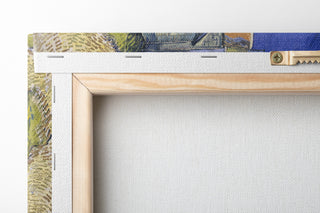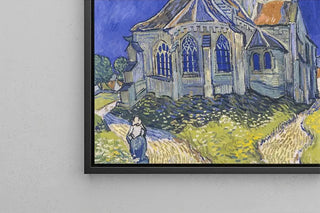Design for a plate - Albert Dammouse

Conception for a plate: Albert Dammouse's decorative elegance
In this artwork, Conception for a plate, Albert Dammouse offers a composition that is both minimalist and delicate, where lines, motifs, and colors respond to each other with finesse. The tones are controlled: earthy shades highlighted with brighter accents that structure the space and direct the viewer's gaze toward the center of the decor. The technique demonstrates artisanal know-how combining precise drawing with a keen sense of ornamentation, creating an atmosphere that is both harmonious and functional. This blend of geometric rigor and visual poetry gives the object a discreet yet assertive presence, ideal for those seeking a subtle decorative piece.
Albert Dammouse, master of ornament and decorative ceramics
Albert Dammouse was recognized for his commitment to the renewal of decorative arts, influenced by the movements of the late 19th and early 20th centuries. His approach combines traditional craftsmanship with a modern sense of design, with a marked interest in applications on utilitarian supports such as ceramics and textiles. Among his contributions are series of objects where composition and line quality take precedence, bringing his work closer to that of decorative art workshops. His practice enriched the domestic aesthetic of his time and continues to inspire collectors and decorators sensitive to the balance between beauty and functionality.
A decorative acquisition with multiple advantages
This art print of the Conception for a plate is designed to easily integrate into various interiors: living room, dining room, contemporary kitchen, or office. The artwork Conception for a plate, faithfully reproduced in color and detail, adds a touch of measured elegance and a refined focal point. The canvas Conception for a plate, printed on a high-quality support, captures the texture and finesse of the original line work, ensuring longevity and resistance to domestic exposure. Choosing this piece means opting for a decorative object that interacts with the space without overwhelming it, while celebrating the artistic heritage of a creator attentive to drawing and functionality.

Conception for a plate: Albert Dammouse's decorative elegance
In this artwork, Conception for a plate, Albert Dammouse offers a composition that is both minimalist and delicate, where lines, motifs, and colors respond to each other with finesse. The tones are controlled: earthy shades highlighted with brighter accents that structure the space and direct the viewer's gaze toward the center of the decor. The technique demonstrates artisanal know-how combining precise drawing with a keen sense of ornamentation, creating an atmosphere that is both harmonious and functional. This blend of geometric rigor and visual poetry gives the object a discreet yet assertive presence, ideal for those seeking a subtle decorative piece.
Albert Dammouse, master of ornament and decorative ceramics
Albert Dammouse was recognized for his commitment to the renewal of decorative arts, influenced by the movements of the late 19th and early 20th centuries. His approach combines traditional craftsmanship with a modern sense of design, with a marked interest in applications on utilitarian supports such as ceramics and textiles. Among his contributions are series of objects where composition and line quality take precedence, bringing his work closer to that of decorative art workshops. His practice enriched the domestic aesthetic of his time and continues to inspire collectors and decorators sensitive to the balance between beauty and functionality.
A decorative acquisition with multiple advantages
This art print of the Conception for a plate is designed to easily integrate into various interiors: living room, dining room, contemporary kitchen, or office. The artwork Conception for a plate, faithfully reproduced in color and detail, adds a touch of measured elegance and a refined focal point. The canvas Conception for a plate, printed on a high-quality support, captures the texture and finesse of the original line work, ensuring longevity and resistance to domestic exposure. Choosing this piece means opting for a decorative object that interacts with the space without overwhelming it, while celebrating the artistic heritage of a creator attentive to drawing and functionality.





